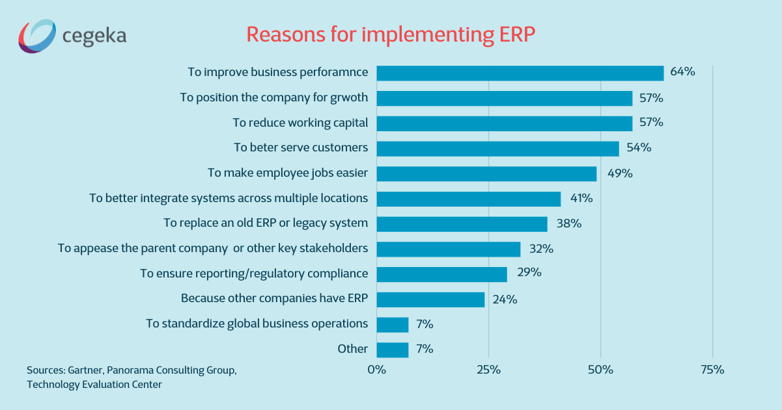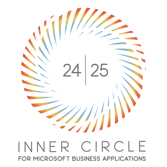ERP projects are challenging, but if done right, they can be incredibly powerful. Throughout our many years as ERP specialists, we have learned that success involves several key steps: from determining business objectives and scope to selecting the right ERP product and partner. Don’t just take our word for it: we’ve asked our customers to chime in as well. Because after all, we are doing this Together in Tech.
Here’s what we’ve got in store for you in the second article of Together in Tech:
- 3 reasons why you should map out all your processes
- a guide with do’s and don’ts of this exercise
- typical pitfalls you should be aware of
Why use business processes to bring harmony to your ERP project?
In our previous article, we talked about the importance of business objectives for your ERP strategy. Now, it’s time to take the next step: which business processes are linked to those objectives – and therefore require extra attention in your ERP project?
For example: If one of the main objectives in a production company is to reduce manual labor (and therefore labor cost), it's very important to know which business processes require high manual interaction. Only when we know those processes, we can take a closer look to determine where additional automation is possible.
2 in 3
ERP projects fail or take longer than expected because of inadequate preparation.**Sources: Gartner, Panorama Consulting, Technology Evaluation Center
There are 3 reasons why you should take the time to map your business processes before diving into the practicalities of your ERP project:
- An ERP project is the perfect time to take a critical look at your processes.
Before implementing an ERP track, it’s important to go beyond the classic features and functions list. A major investment like this is a unique opportunity to take a critical look at your way of working – and to optimize it. Processes and times change, and what was most efficient yesterday might not be today – let alone tomorrow. So why not explore some new possibilities? - By plotting your ERP strategy on your business processes, you gain valuable insights.
Did your company grow internationally over the past years? Perhaps there were some acquisitions? There are a lot of reasons why different departments might be out of sync. Whatever the reason - an ERP project is the perfect time to harmonize them and to introduce process thinking.
By thinking in processes, you automatically start thinking cross-departmentally – or even involve third parties. You look at the bigger picture and map your end-to-end flows. When doing this, it’s important not to get bogged down into the nitty-gritty of how things run now, but rather how they should run. And of course, it’s equally important to determine what is required to get them to run smoothly and create added value. Because ideally, process thinking doesn’t just bring potential issues to light – it also allows new opportunities to jump in..png?width=600&height=250&name=Download%20nu%20(1).png)
- Mapping your business processes allows you to see the impact of your continuous optimization
Mapping your business processes is not just valuable in the moment, but also down the line, for future optimizations. For example: if I replace (part of) a system, what processes are affected? And how much? With a process library, you know what to expect.
It also makes it easier to work together with partners and your own key users: having a clear view of your processes lets you share them, discuss them, create training material and of course, select the right ERP partner.
"Microsoft Dynamics NAV had already proven its added value for some of our employees. But ARLU needed more than a new implementation of the same software. We wanted to integrate and optimize our business processes at the same time."
Wim Waelkens
CEO at ARLU
You don’t start an ERP project to test out a new ERP product.
So why do you?
-
To work and collaborate more efficiently across departments.
-
To harmonize different divisions, for example after a series of acquisitions.
-
To introduce a different way of working for customers and create added value.

Getting a read on your business processes
Mapping your business processes will form the framework for your entire ERP project – no small task! So where do you start? Each company has its own preferences and specifics, but this checklist should help you find your path.
- Bring management and key users together and have a critical look at your way of working. Are you working in the most efficient way? Or do you need to rethink your flow? Don’t make the mistake of hanging on to your current way of working out of habit. You risk plotting your ERP solution on that unstable foundation. The tools support the process, not the other way around.
- Differentiate between key processes and supporting processes. What are the processes that allow your business to prosper and really make a difference? That’s where your focus should be. Not sure how to determine that? We have a library of industry best practices to help!
- Allocate levels of importance to your processes. Not every process is as important for your organization. Rank your processes in order of importance to have a clear guideline of where your priorities should lie.
- Don’t get bogged down into features and functions. Focus first on business processes and what they need to achieve. Only after that do the tools and technology come into play. For example: your sales process might include the requirement of processing an order within 24 hours. You should make note of that, not “I need x and y functionality in my ERP set-up” – that’s for a later stage.
"When we first looked at replacting our ERP system, we didn't question our processes. Soon, we found out that finding a solution to fit our way of working wasn't easy. So we took a step back and examined our business goals and processes. The end result: a far better ERP than we ever would have achieved before."
Pol van Wesembeeck
Head of Logistics & Development at D'Ieteren
Things to watch out for when mapping your business processes
- Stay in charge, you’re telling the story. Make sure you stay in the lead when mapping your business processes. You’re telling the story of your organization – others can give advice, but you still have final say. Otherwise, you risk ending up with a document that’s thirteen-a-dozen.
- Be guided by business impact, not an extensive wish list of your key users who shout the loudest.
- Prepare your team by bringing them together and listening to their needs. This way, you can make clear that you’re all after the same bottom line. You’ll introduce process thinking company-wide and ensure everyone is aligned and working towards the same goals.
Let's work together in Tech?
Cegeka and Microsoft Dynamics 365: it's a perfect match! Get in touch and let’s discuss your ERP project together.
Together in Tech: there’s no I in ERP
To successfully start and finish an ERP project, we need to work on it together. Join us and our customers as we zoom in on all things ERP – from the perspective of true partnership. Check out all the Together in Tech articles here.




